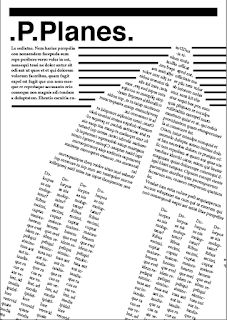In this lecture we looked at How to have an idea and how an idea can be composed. This was done to help us start to produce Ideas for our 'Sense of Place' project.
The aim of researching into various fields is to communicate ideas through images, words and layouts. We also talked about how through the next few weeks each week would have an aim and a topic to focus our work on so that we have a wide spread of research for our concertina book. These were not there to follow exactly but more so to trigger our mind into producing alternative ideas but still be there to help us if we were struggling. personally i would like to stay away from these guidelines as i feel they may limit my thought process if i play it safe. This will help me to gather multiple ideas and responses to each topic and begin to create our my idea for the sense of place project.
Once i did this my end goal is to produce a number of ideas for the brief I have been given. I discussed how doing this can be one of the hardest parts of a project as my mind needs to settle into thinking about the brief and how it can tackle it. I feel that the best way to start off my ideas is to indulge myself in various forms of research such as Books , Exhibitions and Social Media.
He then began to discuss what can happen when the ideas don't come to us also known as writers block or creative block. During this time we should come up with a set of approaches and techniques that are already in place so that when this happens we have some sort of solution.
Idea: "a thought or suggestion as to a possible course of action".
Finally we looked at how we can find ideas. He discussed questions and ideas on the topic such as:
- How will you create an entry point into your topic?
- Is there something that intrigues you that can start a direction or train of thought, a discussion, an argument, an investigation to propel the thought process?
- Is there a problem or an issue that needs to be identified before thinking?
Then he discussed way we can do this and get ideas out in the open:
- Attribute lists
- Mind maps
- Synetics
- Moodboards
- Brainstorming
- Brain-writing
- Brain-drawing
- Timelines
- Genealogy
- Sketching
- Storyboards
















